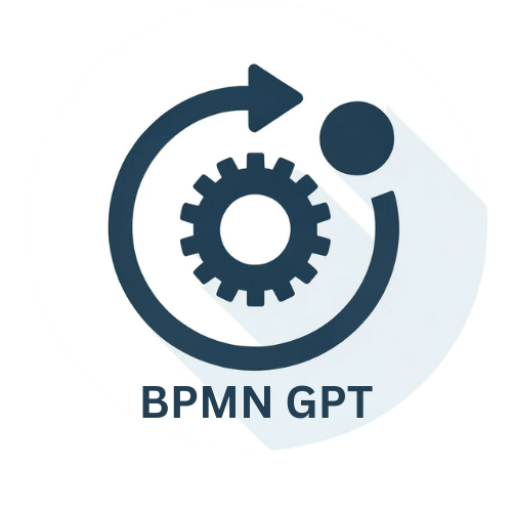Flowscript BPMN-AI-powered business process documentation
AI-enhanced BPMN for seamless process documentation
Quick Start guide
Check my Flowscript for Errors
Convert my bullet points to a Flowscript
Make my process better
Teach Me Flowscript
Convert Flowscript to bullet points
Related Tools
Load More
BPMN-GPT
Business Process Management Notation GPT. Transform your process steps into BPMN code

Diagram (UML/BPMN ) Creator
Crafts professional diagrams for business.

Workflow Designer
Designs workflow diagrams from user inputs

BPMN gpt
Friendly and engaging while creating BPMN diagrams.

Process Pro Plus
Intelligent business process analysis. Expert in BPMN 2.0 diagrams, business process description, DMN (DRD)'s creation. Let’s delve into creating BPMN XML code for these algorithmic steps

BPMN Builder
Expert in creating BPMN diagrams for business processes
20.0 / 5 (200 votes)
Introduction to Flowscript BPMN
FlowScript BPMN is a dynamic markdown language designed for documenting and visualizing business processes in alignment with BPMN (Business Process Model and Notation) principles. It enhances traditional BPMN by incorporating AI-assisted functionalities for comprehensive process analysis, ensuring clarity, consistency, and efficiency in business process management. The language utilizes specific tags to represent different process elements, such as steps, decisions, and events, allowing users to create detailed and structured process flows. For example, a simple FlowScript might begin with a [Start] tag, include several [Step] tags for different activities, and conclude with an [End] tag, ensuring a clear and concise representation of the process.

Main Functions of Flowscript BPMN
Process Documentation
Example
[Start] [Step:DataValidation] [Step:DataEntry] [End]
Scenario
A company needs to document its data entry process. Using FlowScript, they can clearly outline each step, from data validation to data entry, ensuring all team members understand the process.
Decision Making
Example
[Decision:EligibilityCheck] [If] Customer eligible [Step:ApproveApplication] [Else] [Step:RejectApplication] [/Decision]
Scenario
A bank needs to determine the eligibility of loan applications. By using the Decision tag, they can document the decision-making process, specifying actions for both eligible and ineligible customers.
Parallel Processing
Example
[Parallel:Verification] [Step:CreditCheck] [Step:BackgroundCheck] [/Parallel] [Merge:VerificationResults]
Scenario
An HR department needs to perform simultaneous background and credit checks for new employees. The Parallel and Merge tags allow them to document these concurrent tasks and merge the results for further action.
Ideal Users of Flowscript BPMN
Business Analysts
Business analysts who are responsible for modeling and analyzing business processes can greatly benefit from FlowScript BPMN. The language provides a clear and structured way to document complex processes, facilitating better communication and understanding among stakeholders.
Project Managers
Project managers overseeing large projects with multiple processes can use FlowScript BPMN to visualize and manage workflows. This helps in identifying potential bottlenecks, ensuring timely completion of tasks, and maintaining process integrity.
IT Professionals
IT professionals involved in system design and implementation can leverage FlowScript BPMN to document technical processes and workflows. This ensures that all technical steps are clearly defined and followed, reducing the risk of errors and improving system reliability.

How to Use Flowscript BPMN
Step 1
Visit aichatonline.org for a free trial without login, also no need for ChatGPT Plus.
Step 2
Understand the basic structure and tags used in FlowScript. Familiarize yourself with start/end tags, process steps, decision-making, and AI interaction tags.
Step 3
Start creating your FlowScript by defining the process from start to end. Use tags such as [Start], [Step], [Decision], [If], [Else], [End] to document the process.
Step 4
Validate and refine your FlowScript using AI interaction tags like [ai:validate] and [ai:suggest] to ensure completeness and optimize the process.
Step 5
Share and collaborate on your FlowScript with others, leveraging the AI's ability to provide suggestions and improvements for better process documentation.
Try other advanced and practical GPTs
八字,六爻,周易,紫薇斗数,诸葛测字
AI-powered Traditional Chinese Wisdom

Fractal Financial
AI-powered fractal market analysis.

製薬MR/MSLボット(Pharma MR Bot)
AI-powered tool for pharmaceutical expertise

Research Reviewer
Enhance Your Research Reviews with AI

我是 rapper
AI-Powered Rap Lyrics Creation

GPT Finder
Discover the best GPTs effortlessly

AVRealityCheck
AI-powered insights for real relationships.

换梦永书
AI-powered collaborative storytelling

CloudGPT
AI-Powered Cloud and DevOps Assistance

萌え擬人化メーカー
Transform anything into a moe character with AI.

SEO Meta Master
AI-powered tool for SEO meta descriptions.

Jacques
AI-powered learning for deeper understanding.

- Business Analysis
- Workflow Automation
- Training Materials
- Process Documentation
- Compliance Verification
Flowscript BPMN Q&A
What is Flowscript BPMN?
Flowscript BPMN is a markdown language designed for documenting and visualizing business processes. It aligns with BPMN principles and includes AI functionalities for process analysis and optimization.
How can I start using Flowscript BPMN?
Visit aichatonline.org for a free trial without login. Understand the basic tags and structure, then begin documenting your processes using the FlowScript syntax.
What are some common use cases for Flowscript BPMN?
Flowscript BPMN can be used for process documentation, workflow automation, business process analysis, compliance verification, and training materials creation.
How does AI enhance Flowscript BPMN?
AI in Flowscript BPMN provides suggestions, validation, and optimization for the documented processes. It can analyze the flow for errors, suggest improvements, and summarize key steps.
What are the best practices for using Flowscript BPMN?
Ensure consistent labeling, document all potential outcomes, maintain readability, nest decisions appropriately, and leverage AI tags after process completion for insights and validation.